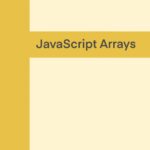Introduction
In the world of JavaScript, there’s a powerful pattern called Immediately Invoked Function Expressions, or IIFEs (pronounced “iffy”). These are functions that, as the name suggests, run as soon as they are defined. This might sound a bit complex, but don’t worry! We’re going to break it down with some easy-to-understand examples.
What is an IIFE?
An IIFE is a JavaScript function that runs as soon as it is defined. It is a design pattern which is also known as a Self-Executing Anonymous Function and contains two major parts. The first is the anonymous function with lexical scope enclosed within the Grouping Operator (). This prevents accessing variables within the IIFE idiom as well as polluting the global scope. The second part creates the immediately invoked function expression () through which the JavaScript engine will directly interpret the function.
Why Use IIFEs?
IIFEs are incredibly useful for managing scope. They allow you to create variables and functions that are not accessible outside the function, preventing them from cluttering the global scope. This is particularly helpful in larger applications where maintaining a clean global scope is crucial.
Examples of IIFEs
Example 1: Basic Structure
(function() {
// Code goes here
})();
Here, the function is defined and immediately called. This pattern is very common in JavaScript for encapsulating code.
Example 2: Passing Parameters
(function(a, b) {
console.log(a + b); // 3
})(1, 2);
In this example, we pass 1 and 2 as parameters to the IIFE, and it logs 3 to the console.
Example 3: Creating a Private Scope
var result = (function() {
var name = "John";
return name;
})();
// Outside of the IIFE
console.log(result); // "John"
console.log(name); // ReferenceError: name is not defined
This demonstrates how IIFEs can be used to create private variables. The variable name is not accessible outside the IIFE.
Conclusion
IIFEs are a fantastic tool in your JavaScript toolbox. They help manage scope, avoid polluting the global namespace, and provide a level of security for your variables. Next time you’re writing JavaScript, consider if an IIFE could be beneficial in your code structure. With these examples, you should now have a clearer understanding of how to use them effectively.



